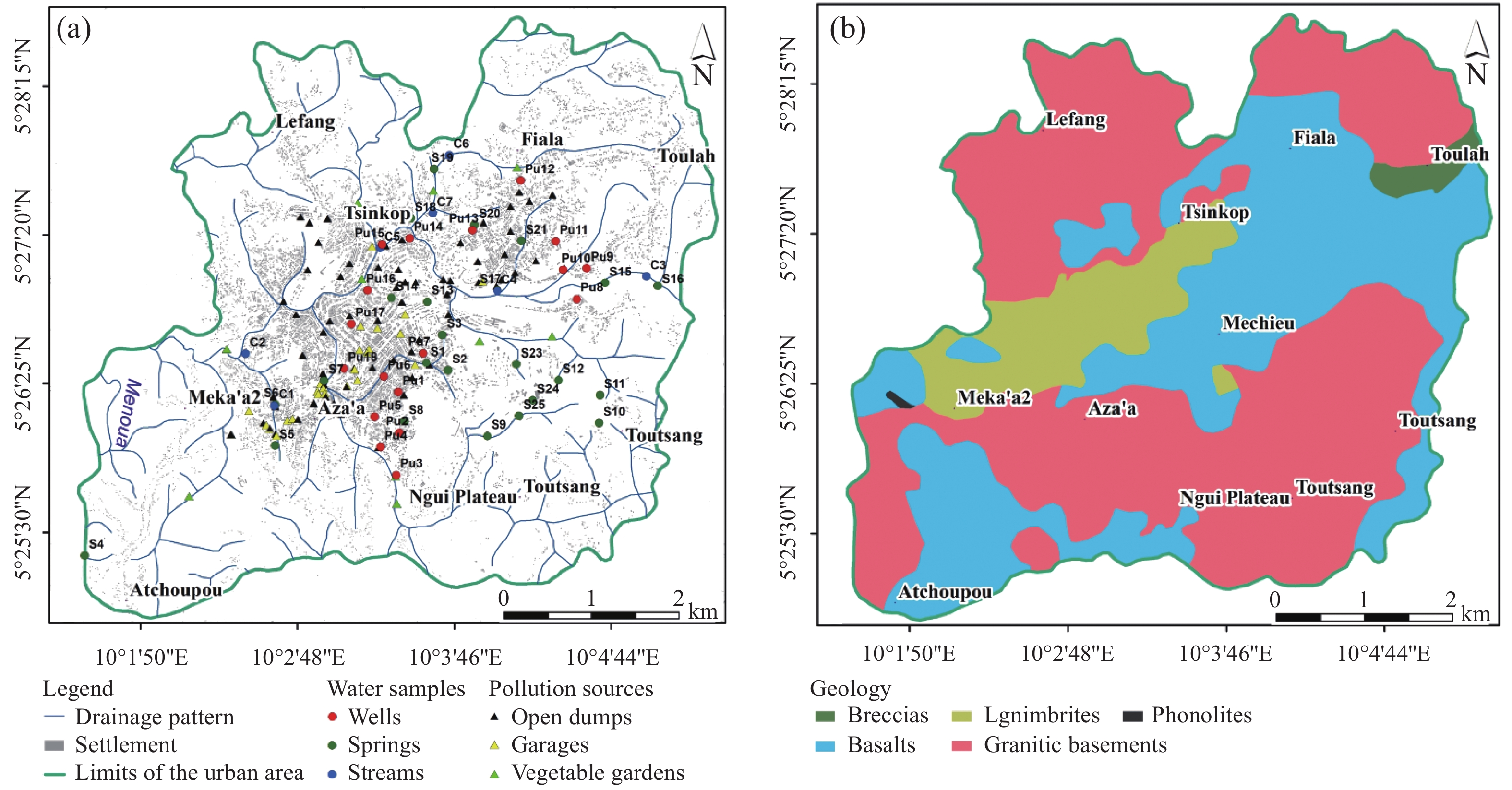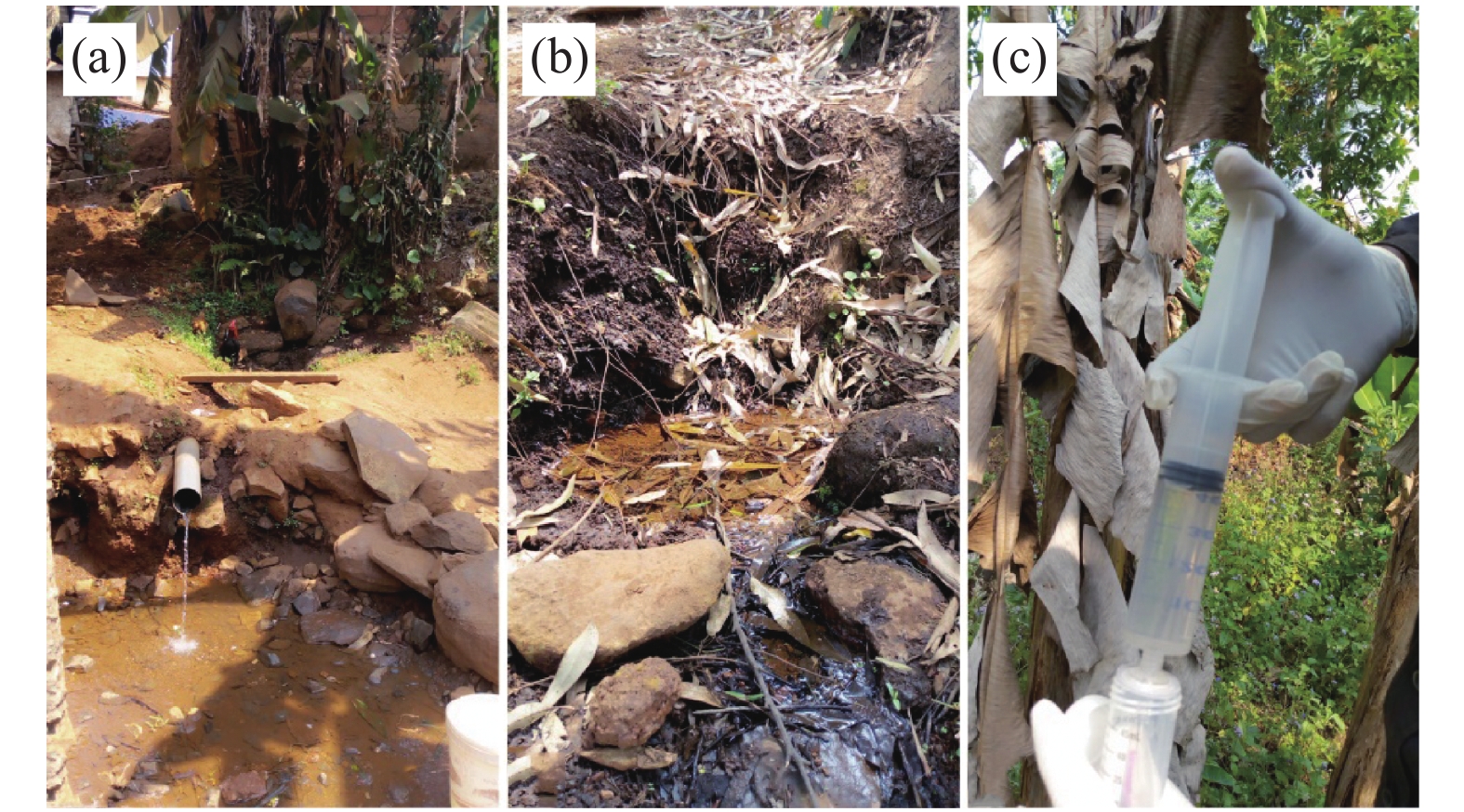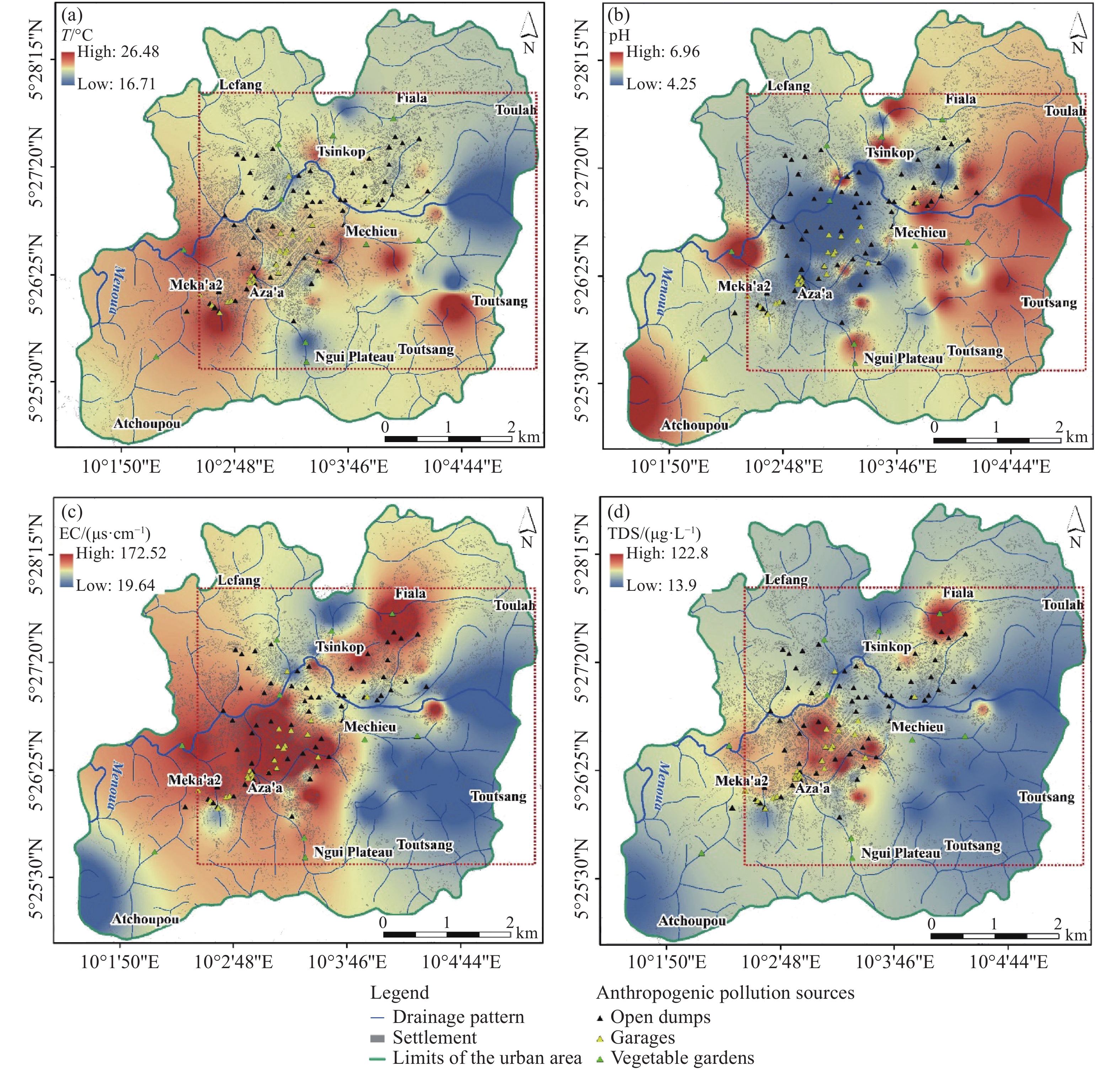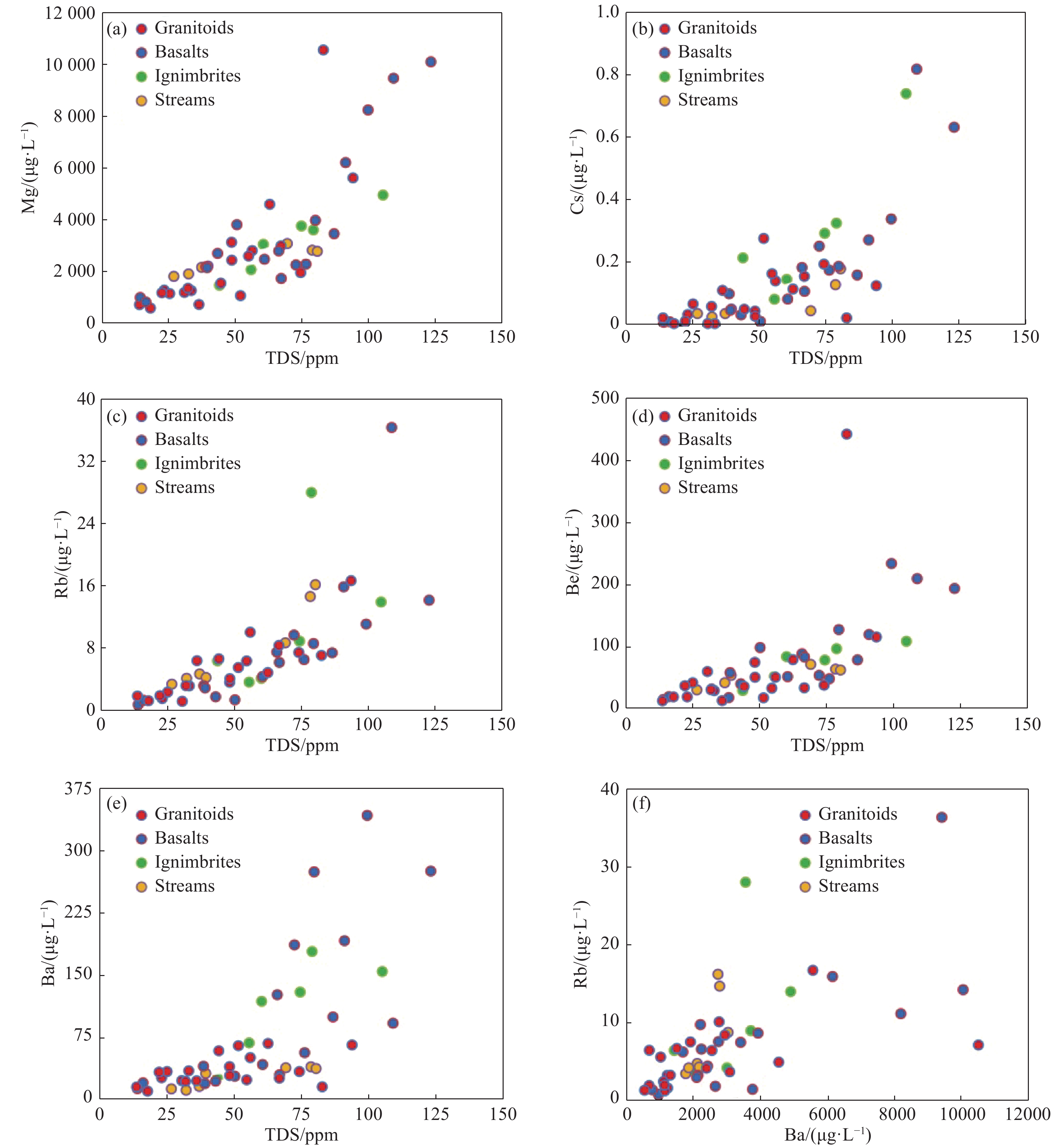| Citation: | Joelle Yemeli Elida, Emile Temgoua, Lucas Kengni, Jean-Paul Ambrosi, Mathieu Momo-nouazi, Brice Silatsa-Tedou Francis, Robean Wamba Franck, Brice Tchakam-Kamtchueng. 2021. Hydro-geochemistry of groundwater and surface water in Dschang town (West Cameroon): Alkali and alkaline-earth elements ascertain lithological and anthropogenic constraints. Journal of Groundwater Science and Engineering, 9(3): 212-224. doi: 10.19637/j.cnki.2305-7068.2021.03.004 |
Hydro-geochemistry of groundwater and surface water in Dschang town (West Cameroon): Alkali and alkaline-earth elements ascertain lithological and anthropogenic constraints
-
Abstract
This study focuses on the sources of alkali and alkaline-earth elements based on the geochemistry of groundwater and surface water in Dschang concerning environmental and anthropogenic constraints. A comprehensive set of 50 samples from groundwater and surface water were analyzed by ICP-MS and processed by spatial interpolation in a GIS environment. The results highlight a geochemical anomaly at the center of the densely inhabited area subject to a profusion of open dumps discharges. This anomaly with the highest spatial contents of Be (Cs, Rb, Mg) suggests an anthropogenic source that demarcates with the lowest alkali and alkaline-earth elements on the peripheral area of Dschang. Other findings include lithological constraints with volcanic rocks being the main source compared to granitoid. The study points out good correlations between Be, Cs, Rb and Mg spatial distributions and physico-chemical parameters of waters (K, EC, TDS), and inversely with the lowest pH. pH is established as the most functioning physico-chemical constraint of alkali and alkaline-earth mobility in Dschang. The pH lowest values within the geochemical anomaly also highlight the impact of human activities on water acidity, which later enhance elements mobility and enrichment. Despite low elements contents relative to WHO standards, our findings point out an example of anthropogenic impact on water geochemistry linked to solid waste pollution; it also demonstrates significant anthropogenic changes of environmental physico-chemical parameters of prime importance in the mobility and distribution of elements in the study area. Similar assessments should be extended in major towns in Cameroon.
-

-
References
[1] Adamczyk Z, Nowińska K. 2016. Environmental mobility of trace elements present in dusts emitted from Zn-Pb metallurgical processes. Environmental Earth Science, 75: 956.1-956.6. [2] Ako Ako A, Takem Eyong GE, Shimada J, et al. 2014. Nitrate contamination of groundwater in two areas of the Cameroon Volcanic Line (Banana Plain and Mount Cameroon area). Applied Water Science, 4: 99-113. doi: 10.1007/s13201-013-0134-x [3] Ananfouet Djeufack CY. 2012. Cartographie et caractérisation géotechnique des sols développés sur roches volcaniques dans la ville de Dschang. Thèse de Doctorat, Université de Dschang : 58. (in French) [4] Bakyayita GK, Norrström AC, Kulabako RN. 2019. Assessment of levels, speciation, and toxicity of trace metal contaminants in selected shallow groundwater sources, surface runoff, wastewater, and surface water from designated streams in Lake Victoria Basin, Uganda. Journal of Environmental and Public Health, Article ID 6734017: 18. [5] Benessam S, Debieche TH, Amiour S, et al. 2019. Mobility of metallic trace elements in surface waters and sediments: Case of the Nil Wadi (Jijel, North-East Algeria). Advances in sustainable and environmental hydrology, hydrogeology, hydrochemistry and water resources. CAJG 2018. Springer: 69-71. [6] Defo C, Mishra AK, Yerima BPK, et al. 2016. Current conditions of groundwater resources development and related problems in the Republic of Cameroon, West Africa. European Water, 54: 43-68. [7] Elumalai V, Brindha K, Sithole B, et al. 2017. Spatial interpolation methods and geostatistics for mapping groundwater contamination in a coastal area. Environmental Science and Pollution Research, 24: 11601-11617. doi: 10.1007/s11356-017-8681-6 [8] Embaby A, Redwan M. 2019. Sources and behavior of trace elements in groundwater in the South Eastern Desert, Egypt. Environmental Monitoring and Assessment, 191: 686. doi: 10.1007/s10661-019-7868-3 [9] Ge Y, Murray P, Hendershot WH. 2000. Trace metal speciation and bioavailability in urban soils. Environmental Pollution, 107: 137-144. doi: 10.1016/s0269-7491(99)00119-0 [10] Huynh TDM. 2009. Impact des métaux lourds sur l’interaction plante/vers de terre/microbe tellurique. Thèse de Doctorat, Université de Paris Est: 145. (in French) [11] Kravchenko J, Darrah TH, Miller RK. 2014. A review of the health impacts of barium from natural and anthropogenic exposure. Environmental Geochemistry and Health, 36: 797-814. doi: 10.1007/s10653-014-9622-7 [12] Kwékam M, Liégeois JP, Njonfang E, et al. 2010. Nature, origin and significance of the Fomopéa Pan-African high-K calc-alkaline plutonic complex in the Central African fold belt (Cameroon). Journal of African Earth Sciences, 57: 79-95. doi: 10.1016/j.jafrearsci.2009.07.012 [13] Li PY, Wu JH, Qian J. 2014. Hydrogeochemistry and quality assessment of shallow groundwater in the southern part of the Yellow River Alluvial Plain (Zhongwei Section), Northwest China. Earth Sciences Research Journal, 18(1): 27-38. doi: 10.15446/esrj.v18n1.34048 [14] Liao F, Wang G, Shi Z, et al. 2018. Distributions, sources, and species of heavy metals/trace elements in shallow groundwater around the Poyang Lake, East China. Exposure and Health, 10: 211-227. doi: 10.1007/s12403-017-0256-8 [15] Mba FF, Temgoua E, Kengne PD, et al. 2019. Vulnérabilité des eaux souterraines à la pollution dans la ville de Dschang, Ouest-Cameroun. International Journal of Biological and Chemical Sciences, 13(5): 39-56. doi: 10.4314/ijbcs.v13i5.3S [16] Mfonka Z, Kpoumié A, Ngouh AN, et al. 2021. Water quality assessment in the Bamoun Plateau, Western Cameroon: Hydrogeochemical modelling and multivariate statistical analysis approach. Journal of Water Resource and Protection, 13: 112-138. doi: 10.4236/jwarp.2021.132007 [17] Mofor NA, Tamungang EBN, Mvondo-zé AD, et al. 2017. Assessment of physico-chemical and heavy metals properties of some agricultural soils of Awing-North West Cameroon. Archives of Agriculture and Environmental Science, 2(4): 277-286. doi: 10.26832/24566632.2017.020405 [18] Momo Nouazi M, Yemefack M, Tematio P, et al. 2016. Distribution of bauxitic duricrusted laterites on the Bamiléké plateau (West Cameroon): Constraints from GIS mapping and geochemistry. Catena, 40: 15-23. [19] Morris LA. 2004. Soil biology and tree growth | Soil organic matter forms and functions. Encyclopedia of Forest Sciences, Elsevier: 1201-1207. ISBN 9780121451608 [20] Ngouffo R. 1989. Les monts Bambouto, environment et utilisation de l’espace. Thèse de Doctorat 3ème cycle de géographie Physique, Université de Yaoundé: 374. (in French) [21] Nirel PM, Revaclier R. 1999. Assessment of sewage treatment plant effluents impact on river water quality using dissolved Rb/Sr ratio. Environmental Science and Technology, 33(12): 1996-2000. doi: 10.1021/es981097g [22] Njoyim KI, Kengni L, Tita AM, et al. 2020. Hydrogeochemistry of surface and ground water in Alatening Village, Northwest Region, Cameroon. Applied and Environmental Soil Science, 12: 1-15. [23] Njueya Kopa A, Zebaze Tonang A, Kengni L, et al. 2021. Assessment of groundwater mineralization processes in Mbakaou Area (Adamawa Plateau-Cameroon) by using conventional diagrams and multivariate statistical analysis. European Journal of Environment and Earth Sciences, 2(1): 44-52. doi: 10.24018/ejgeo.2021.2.1.11 [24] Nkouathio DG, Kagou Dongmo A, Bardintzeff JM, et al. 2008. Evolution of volcanism in graben and horst structures along the Cenozoic Cameroon Line (Africa): Implications for tectonic evolution and mantle source composition. Mineralogy and Petrology, 94: 287-303. doi: 10.1007/s00710-008-0018-1 [25] Noor Shah A, Tanveer M, Hussain S, et al. 2016. Beryllium in the environment: Whether fatal for plant growth? Reviews in Environmental Science and Bio/Technology, 15: 549-561. [26] Ntangmo Tsafack H, Temgoua E, Njine T. 2012. Physico-chemical and bacteriological quality of the vegetable watering water in the Dschang Town, Cameroon. Journal of Environmental Protection, 3: 949-955. doi: 10.4236/jep.2012.328110 [27] Ntangmo Tsafack H, Temgoua E, Njine T. 2019. Persistance de E coli, des oeufs d’helminthes et des kystes de protozoaires contenus dans les eaux usées urbaines d’arrosage sur les cultures maraîchères à Dschang, Ouest-Cameroun. International Journal of Biological and Chemical Sciences, 13(5): 81-90. (in French) [28] Rodier J, Geoffray CH, Kovacsik G, et al. 1976. L’analyse de l’eau: Eau naturelle, eau résiduaire, eau de mer. 6ème Ed. Dunod Technique Paris: 709-785. (in French) [29] Tchakam Kamtchueng B, Fantong WY, Wirmvem MJ, et al. 2016. Hydrogeochemistry and quality of surface water and groundwater in the vicinity of lake Monoun, West Cameroon: Approach from multivariate statistical analysis and stable isotopic characterization. Environmental Monitoring and Assessment, 188: 1-24. doi: 10.1007/s10661-016-5514-x [30] Temgoua E. 2011. Chemical and bacteriological analysis of drinking water from alternative sources in the Dschang Municipality, Cameroon. Journal of Environmental Protection, 22: 620-628. doi: 10.4236/jep.2011.25071 [31] Temgoua E, Ntangmo Tsafack H, Njine T, et al. 2012. Vegetable production systems of swamp zone in urban environment in West Cameroon: Case of Dschang City. Universal Journal of Environmental Research and Technology, 2(2): 83-92. [32] United Councils and Cities of Cameroon, National Office. 2021. [33] WHO. 2011. Guidelines for drinking-water quality. Fourth edition: 541. -
Access History

-
Figure 1.
(a) Localization of Cameroon within nearby countries; (b) Localization of Dschang town on the southern slope of Mount Bambouto
-
Figure 2.
(a) Settlement and drainage pattern in Dschang. Water samples locations and distribution of anthropogenic pollution sites are shown. Vegetable garden sites are adapted from Ntangmo Tsafack et al. (2012); (b) Geology of Dschang area
-
Figure 3.
Water sampling on the field. (a) Spring on densely populated area of Dschang; (b) Spring on peripheral area of Dschang; (c) Sampling kit.
-
Figure 4.
Relationship scatters diagram of EC, pH, TDS and T. pH values are magnified with a 10 factor. (a) Groundwater on basalts; (b) Groundwater on ignimbrites; (c) Groundwater on granitoids; d) Rivers.
-
Figure 5.
Spatial interpolated distribution maps of (a) temperature; (b) the hydrogen potential (pH); (c) electrical conductivity (EC); (d) total dissolved solids in Dschang
-
Figure 6.
Binary diagrams of the correlation between alkaline and alkaline earth elements and physico-chemical parameters of waters in Dschang (a) Mg vs TDS; (b) Cs vs TDS; (c) Rb vs TDS; (d) Be vs TDS; (e) Ba vs TDS; (f) Ba vs Rb. Colors represent the different lithological origins of groundwater samples, and surface water
-
Figure 7.
Rb/Sr ratio relative to lithology and types of waters.
-
Figure 8.
Interpolated maps of the spatial distribution of alkaline and alkaline earth elements in Dschang. Settlements and anthropogenic sources of elements distribution are superimposed for a comprehensive analysis.

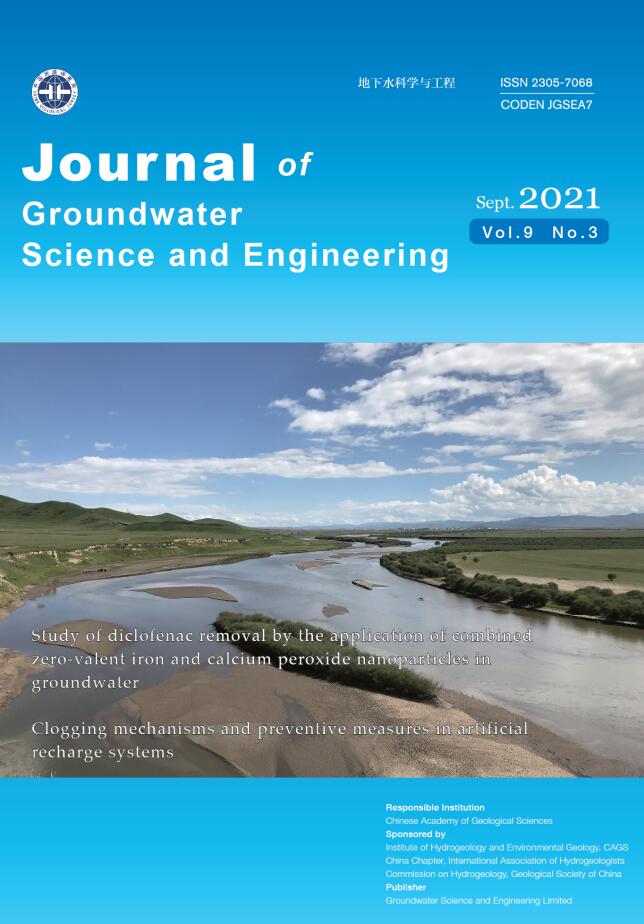



 DownLoad:
DownLoad:
